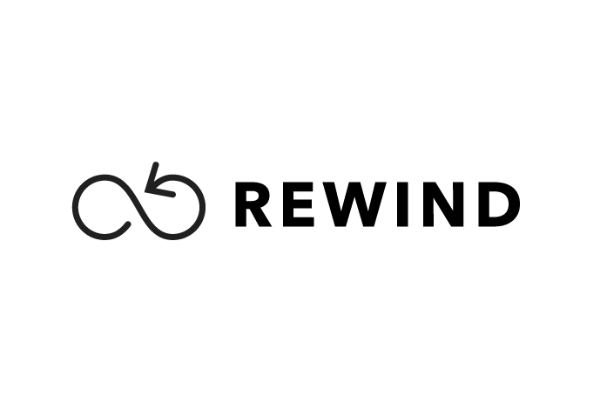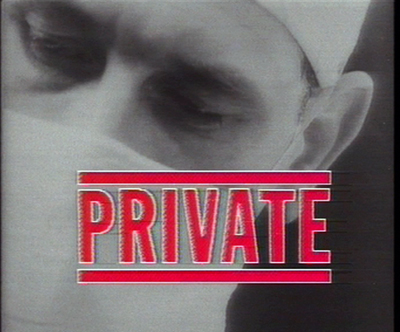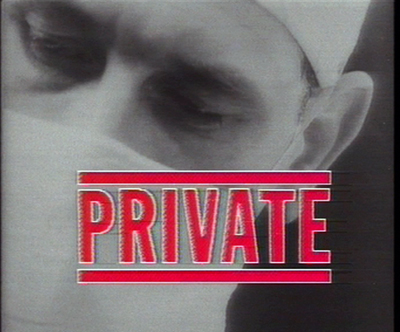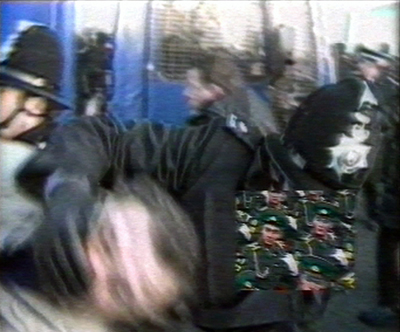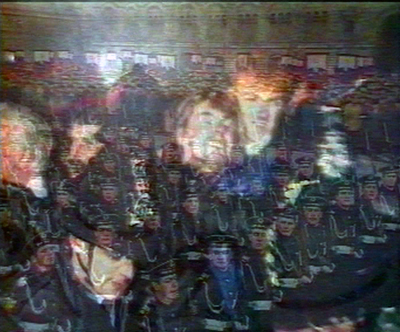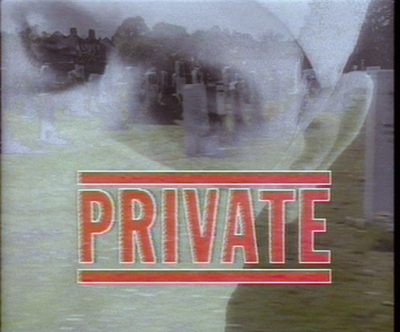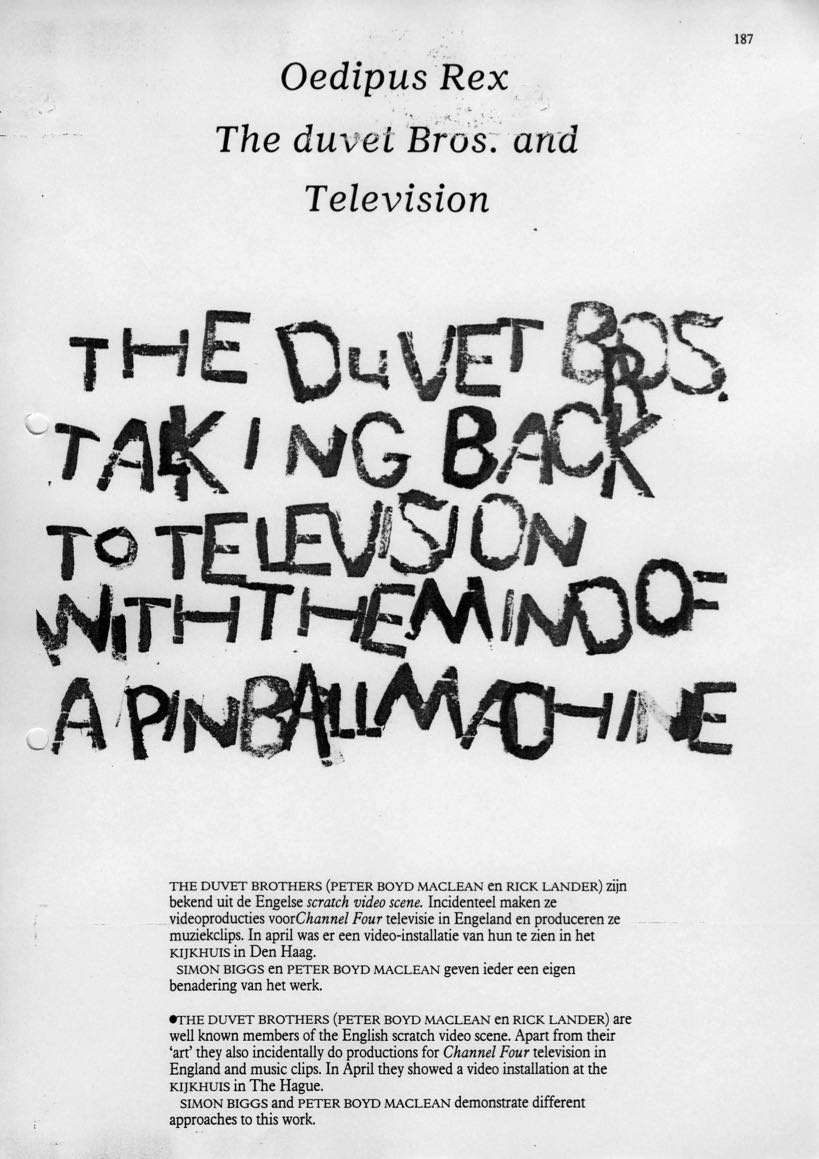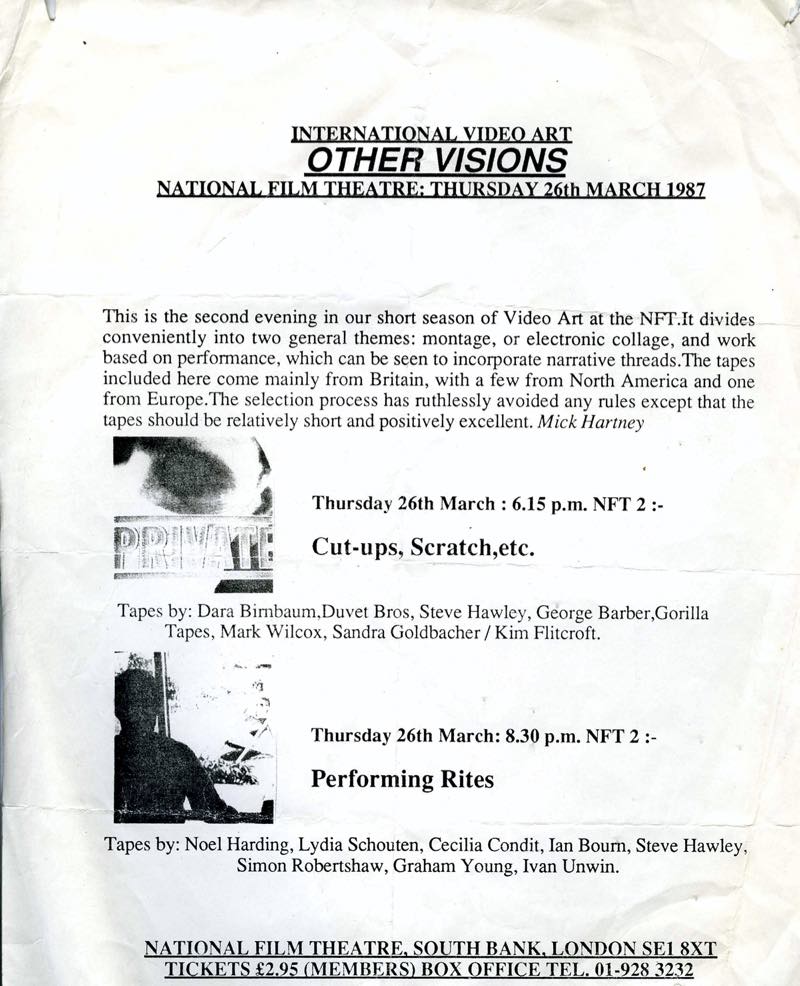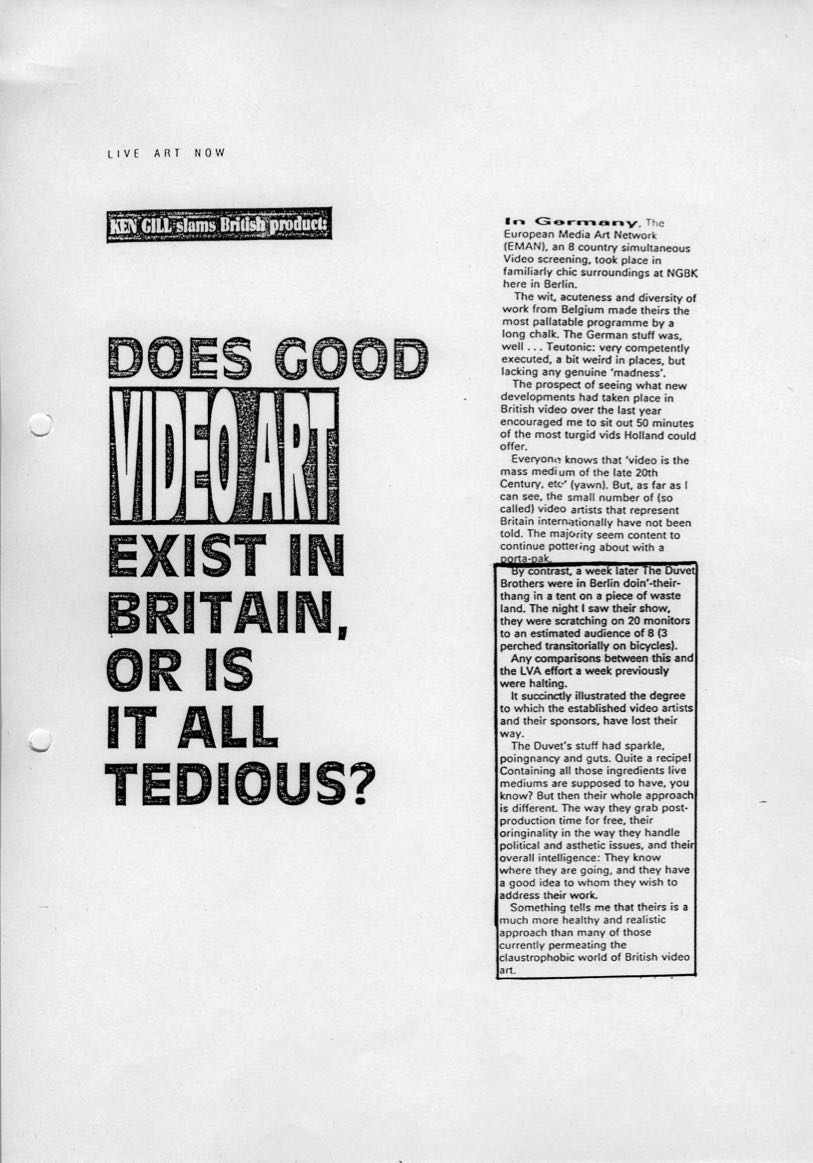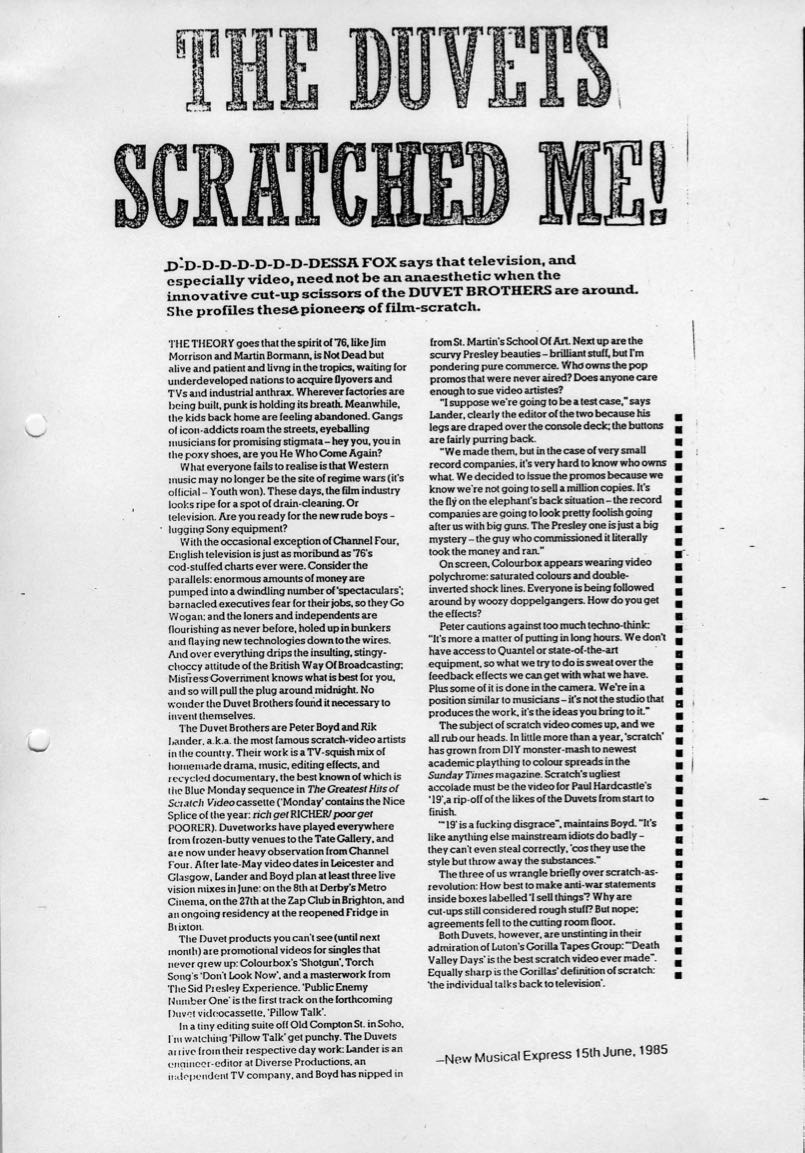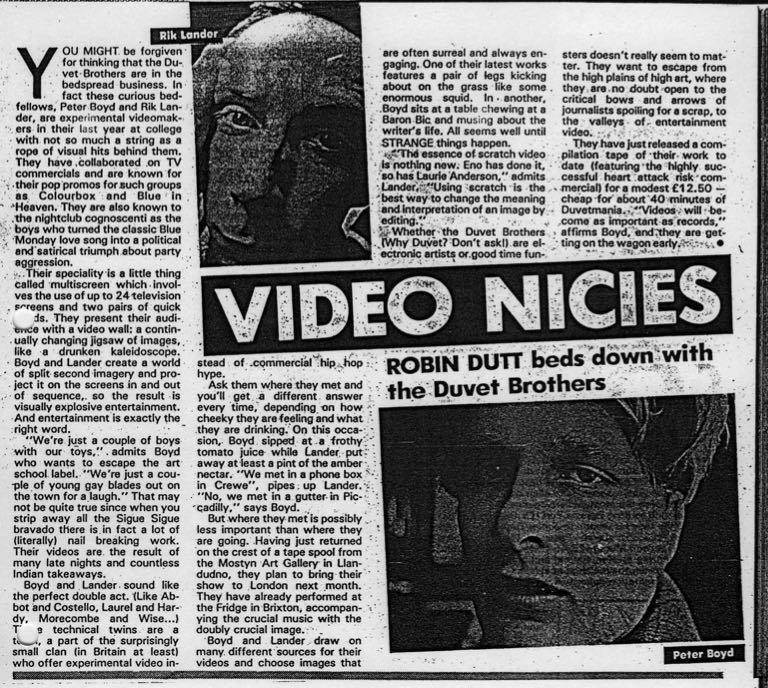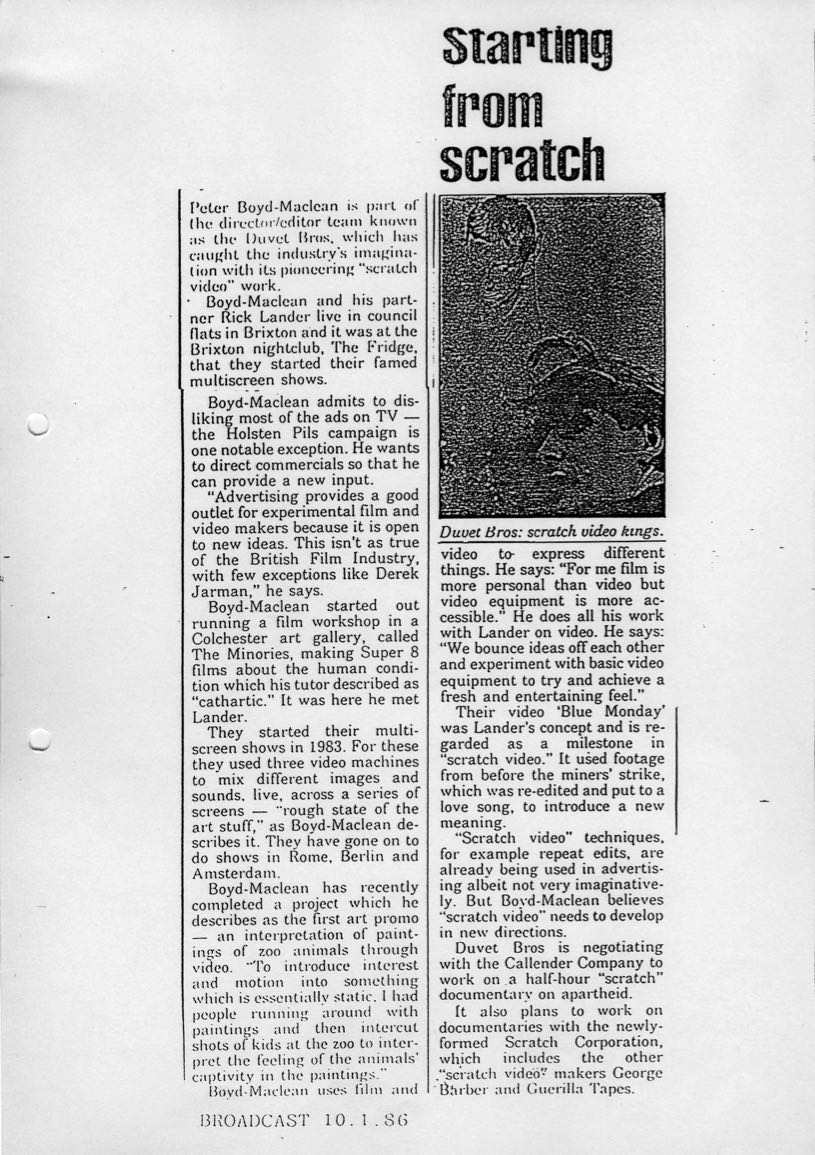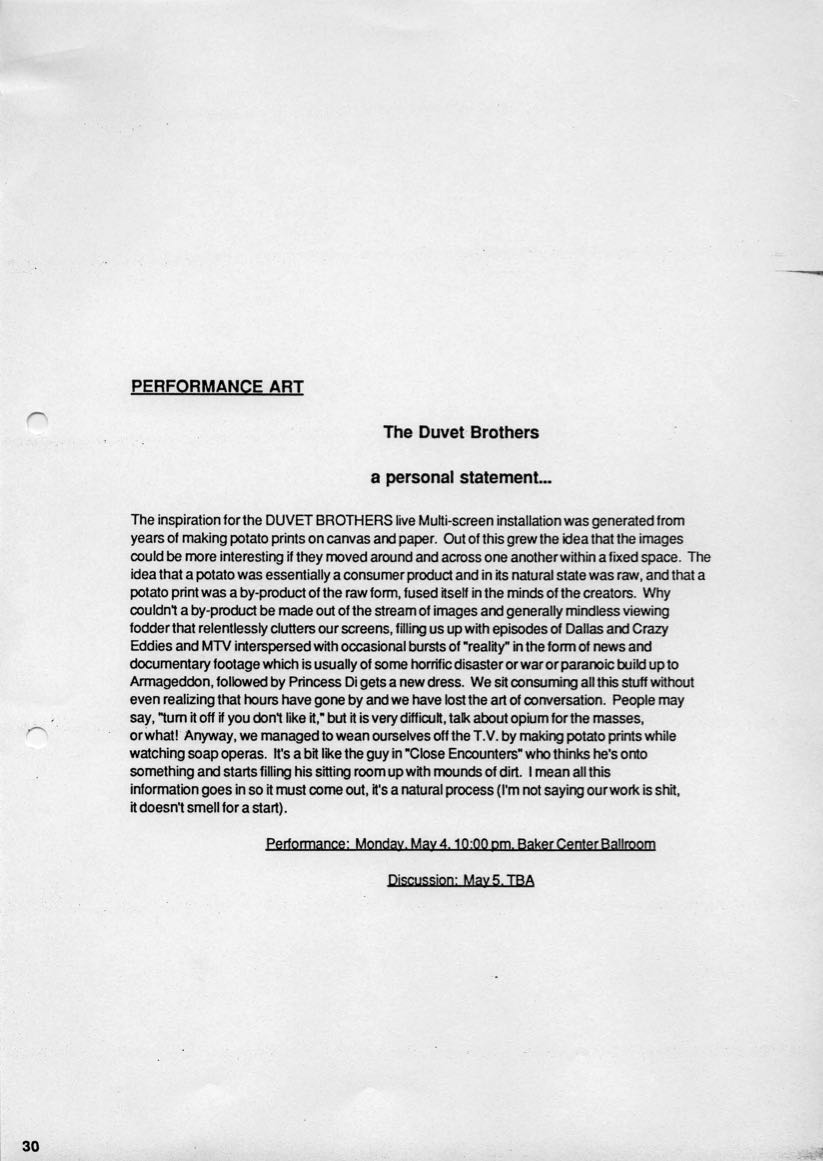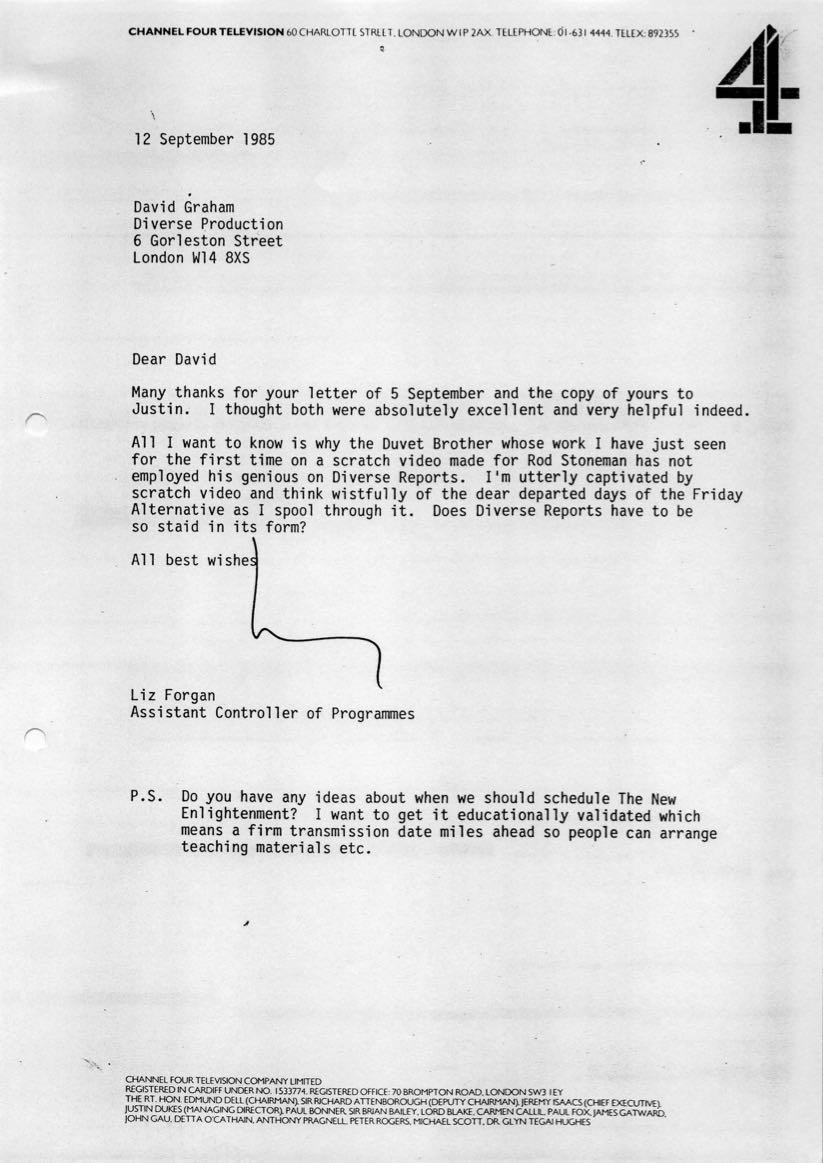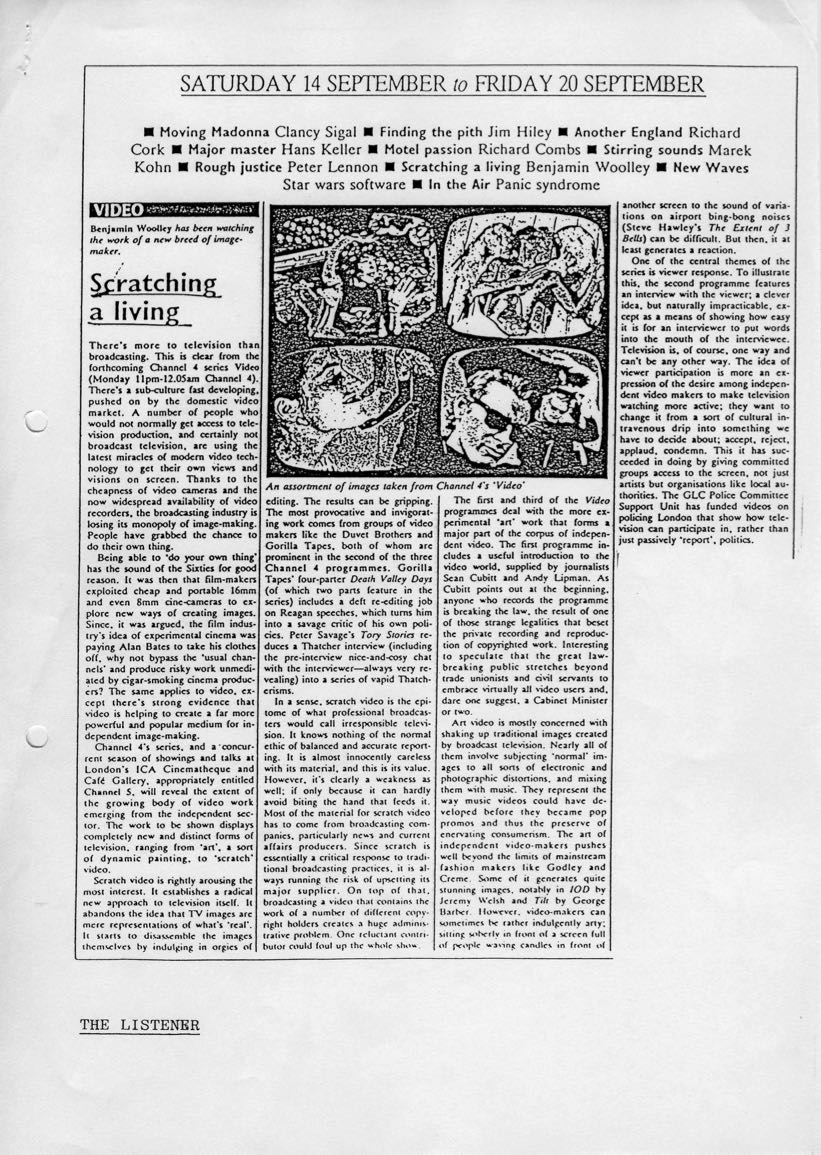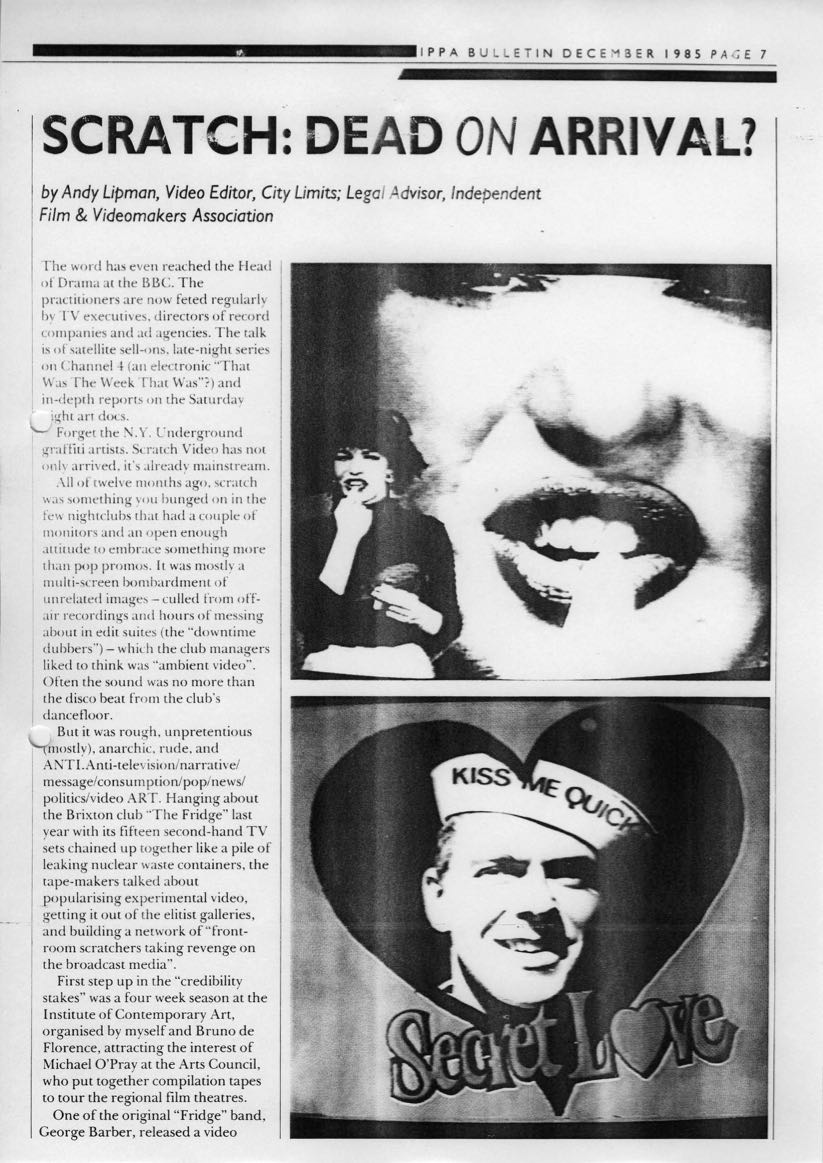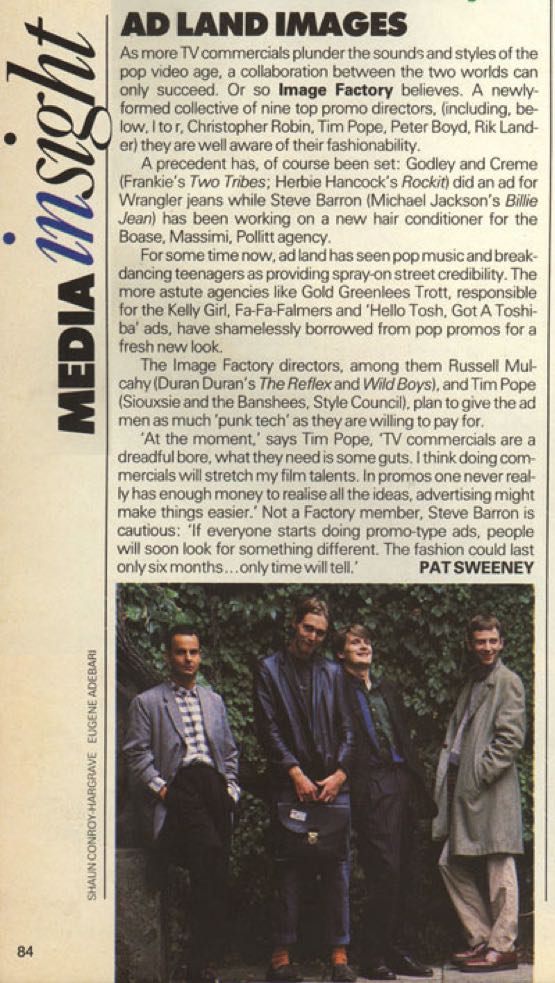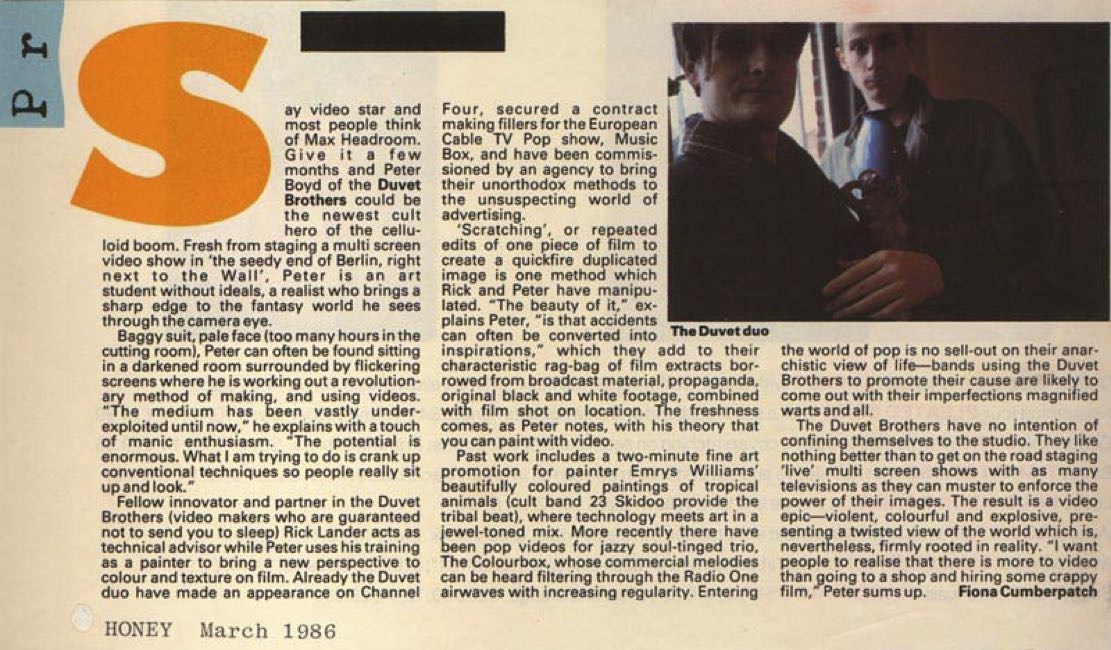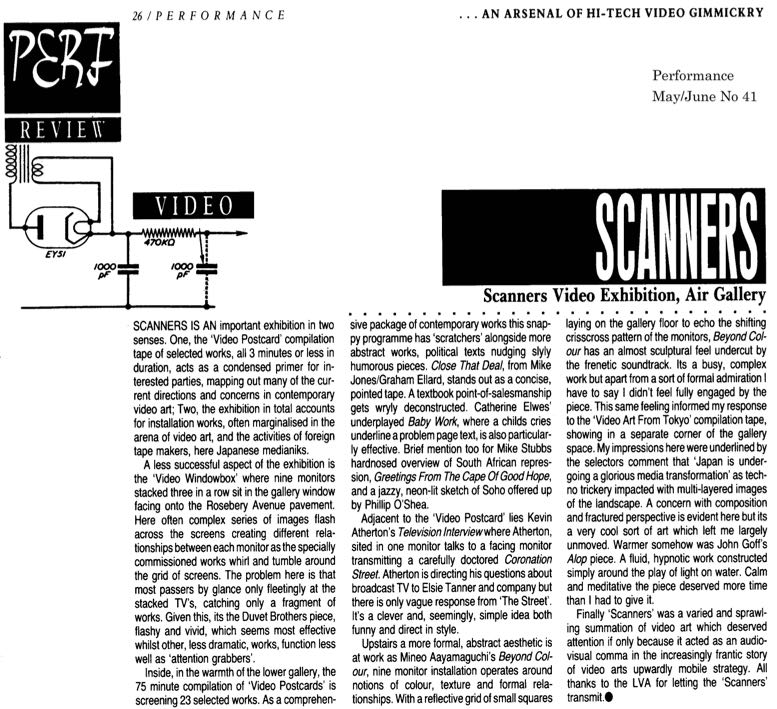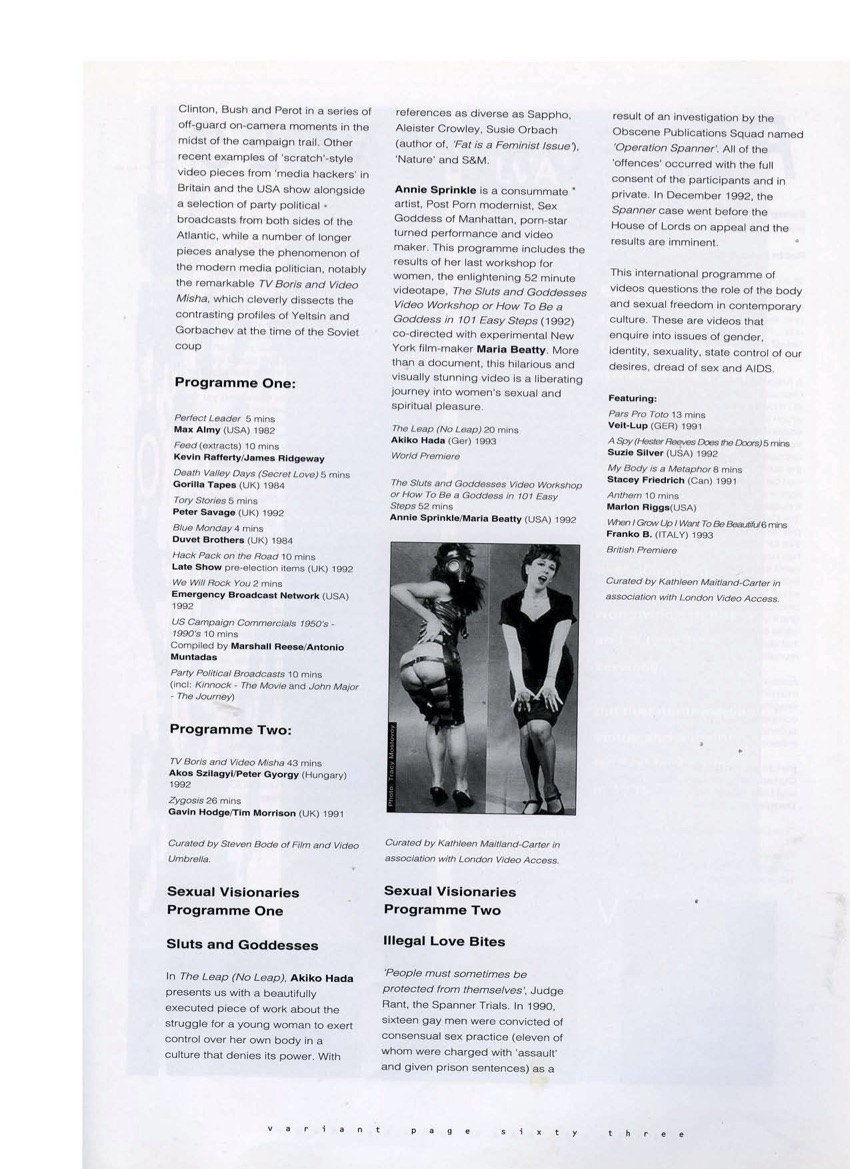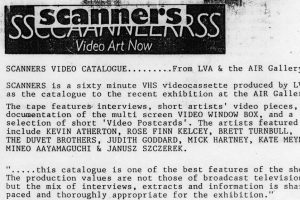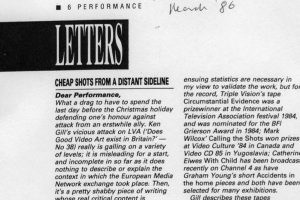Duvet Brothers
The Duvet Brothers are Peter Boyd Maclean and Rik Lander. Lander and Maclean met at The Colchester Film Workshop and began collaborating in 1983. Their first collaborative work was Torchsong – Don’t Look Now. Beginning as a parody of a pop promo and recorded using 2 VCRs to the soundtrack of Magazine’s Motorcade, Boyd Maclean showed the completed piece to a band, the band wanted to re-make the promo starring themselves – the band was Torchsong and the song was Don’t Look Now.
The Duvet Brothers employ the technique, and were part of the mid 80’s art movement of Scratch Video. Scratch Video arose in opposition to the mass communication of broadcast television, and employed a technique involving fast-cutting and elements of found footage. Perhaps the Duvet’s most well known work is ‘Blue Monday’ (1984). The piece was screened on Channel 4 in 1985 and featured on George Barber’s compilation ‘The Greatest Hits of Scratch Video Volume 1’.
Both Rik Lander and Peter Boyd Maclean currently work as directors. Lander has worked for Channel 4, covering events such as the Turner Prize and Boyd Maclean has directed animation pieces including ‘Crapston Villas’ and ‘Greaseland’.
-
View the interview transcript here
-
Videography:
Videotapes
1984
Torchsong
The Sid Presley – Public Enemy No 1
Colourbox, Don’t Look Now
Blue Monday
War Machine
Take It (3 versions)
Horses
Fuh Fuh
Oni Baba
Pillow Talk (compilation)
Live Multiscreen Scratch Show (18 screen installation)
Damaged Goods1985
Laughing Girls (excerpt)
Man or Dog
Far Away Chant
Capstan
Perfect Scratch
Virgin
Judges (2 versions)1986
Harry (3 screen)
Strickley Trigalig (3 screen) -
Artist works:
-
Artist assets:
-
Quotes:
"Blue Monday can be clearly seen to be part of a genre of video art, influenced by the work of artists such as Dara Birnbaum, which later came to be known as 'Scratch Video'. Scratch was an early 1980s phenomenon in the UK and elsewhere which arose through a combination of political, ideological, technical and social forces prevalent at the time. The growth of the home video recorder was clearly a factor in this phenomenon, as was a fascination with the television imagery that had shaped and influenced the visual culture of the post-1960s generation. The social and political climate of the period was also an important factor, especially the decline of post-war socialism and the rise of Thatcherism." Chris Meigh-Andrews, A History of Video Art, The Development of Form and Function. Berg, 2006.
"Some artists are now trying to make direct social comments with scratch. The Duvet Brothers for instance, cut together urban wastelands and well-fed conservative politicians. The pace is snappy and the images are well oiled by the inevitable disco soundtrack. We are left wondering whether to debate the evils of unemployment or get up and dance." Catherine Elwes (1985) 'Through Deconstruction to Reconstruction', Independent Video 48 (November): 21.



